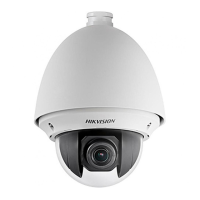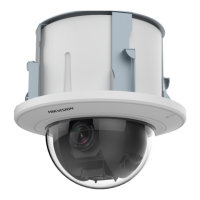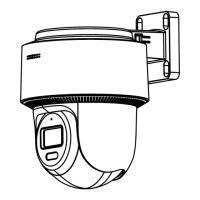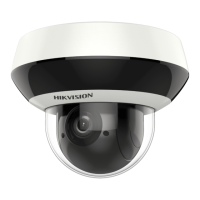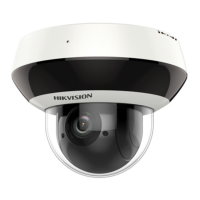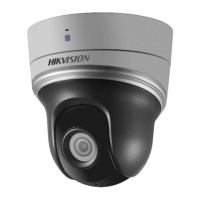Do you have a question about the HIKVISION DS-2DE3304W-DE and is the answer not in the manual?
| IK code | IK10 |
|---|---|
| Form factor | Dome |
| Mounting type | Ceiling/wall |
| Product color | White |
| International Protection (IP) code | IP66 |
| Type | IP security camera |
| Certification | FCC, CE, UL, IEC/EN 61000, IEC/EN 55022, IEC/EN 55024, IEC /EN60950-1 |
| Languages support | BUL, CHI (TR), CZE, DAN, DEU, DUT, ENG, ESP, EST, FIN, FRE, GRE, HRV, HUN, ITA, JPN, KOR, LAT, LIT, NOR, POL, POR, RUM, RUS, SER, SLK, SLV, SWE, THA, TUR, VIE |
| Alarm input/output | Yes |
| Number of languages | 32 |
| Placement supported | Indoor & outdoor |
| Connectivity technology | Wired |
| Sustainability certificates | RoHS |
| Operating temperature (T-T) | -30 - 65 °C |
| Operating relative humidity (H-H) | 0 - 90 % |
| AC input voltage | 36 - 57 V |
| DC output current | 1 A |
| DC output voltage | 12 |
| Power source type | DC, PoE |
| Power consumption (max) | 8 W |
| Number of cameras | 1 |
| Wi-Fi | No |
| Number of users | 32 user(s) |
| Cabling technology | 10/100Base-T(X) |
| Supported network protocols | IPv4/IPv6, HTTP, HTTPS, 802.1X, QoS, FTP, SMTP, UPnP, SNMP, DNS, DDNS, NTP, RTSP, RTP, TCP, UDP, IGMP, ICMP, DHCP, PPPoE |
| Number of simultaneous live view channels | 20 channels |
| Compatible memory cards | MicroSD (TransFlash), MicroSDHC, MicroSDXC |
| Maximum memory card size | 128 GB |
| Total megapixels | 3 MP |
| Maximum resolution | 2048 x 1536 pixels |
| Video compression formats | H.264, H.264+, H.265, H.265+, M-JPEG |
| Noise reduction technology | 3D noise reduction |
| Pan range | 0 - 350 ° |
| Pan speed | 60 °/sec |
| White balance | ATW, Auto, Daylight, Indoor, Manual, Outdoor, Sodium lamp |
| Tilt angle range | 0 - 90 ° |
| Camera shutter speed | 1/1 - 1/10000 s |
| Minimum illumination | 0.01 lx |
| Signal-to-Noise Ratio (SNR) | 52 dB |
| Digital zoom | 16 x |
| Optical zoom | 4 x |
| Focal length range | 2.8 - 12 mm |
| Maximum aperture number | 2.7 |
| Minimum aperture number | 1.6 |
| Sensor type | CMOS |
| Optical sensor size | 1/2.8 \ |
| Height | 107.2 mm |
|---|---|
| Weight | 950 g |
| Diameter | 140.7 mm |
Details compliance with FCC rules for digital devices and radio frequency energy.
States product compliance with European standards like EMC and RoHS directives.
Confirms compliance with Industry Canada's standards for digital devices.
Highlights potential serious injury or death if precautions are neglected.
Details potential injury or equipment damage if precautions are neglected.
Lists the operating system, CPU, RAM, display, and web browser requirements.
Describes various features of the PTZ camera, such as presets and privacy masks.
Instructions for connecting and configuring the camera on a Local Area Network.
Guides on activating the camera via web browser, SADP, or client software.
Explains how to connect the camera to a Wide Area Network.
Details on connecting the camera using a static IP address via router or directly.
Explains how to connect the camera using a dynamic IP address via modem or router.
Steps to access and view the camera feed and control it using a web browser.
Instructions for using the provided client software to manage the camera.
Guides on setting up Wi-Fi connections in manage and ad-hoc modes.
Explains how to use WPS for simplified Wi-Fi setup (PBC and PIN modes).
Details on configuring IP settings for the wireless network interface.
Describes the camera's self-test actions upon receiving power.
Overview of the live video interface and its components.
Instructions on how to initiate the live video feed.
How to manually record video and capture still images from the live view.
Guide to controlling the camera's pan, tilt, zoom, and focus functions.
Steps for defining and recalling specific camera positions (presets).
Settings for main/sub-streams and image size in the live view.
Setting the default or custom starting position for the PTZ camera.
Adjusting parameters like proportional pan, preset speed, and PTZ OSD.
Setting the physical movement boundaries (left/right, up/down) for the camera.
Automating camera actions based on a defined time schedule.
Setting a predefined action for the camera after a period of inactivity.
How to mask specific areas of the video feed for privacy.
Managing control priority between network and RS-485 signals.
Resetting PTZ settings like presets, limits, and scheduled tasks.
Settings for live view and web browser operations like protocol and image format.
Adjusting time zone, time synchronization (NTP, manual), and DST.
TCP/IP, Port, PPPoE, DDNS, SNMP, QoS, FTP, UPnP, NAT, Email, HTTPS settings.
Settings for video stream type, resolution, encoding, and audio parameters.
Adjusting brightness, contrast, saturation, sharpness, exposure, and white balance.
Customizing on-screen display elements like time, camera name, and direction.
Enabling and positioning custom text overlays on the video feed.
Setting up responses to events like motion detection, tampering, and external alarms.
Setting up motion detection areas, sensitivity, and arming schedules.
Enabling detection when the camera lens is covered or obstructed.
Configuring inputs for external alarm devices and their linkage.
Setting up camera's alarm output signals and their timing.
Configuring actions for system exceptions like HDD full or network disconnection.
Setting up detection for sudden audio increases or decreases and their actions.
Enabling Video Content Analysis functions like intrusion and line crossing detection.
Setting up defense regions to trigger alarms when entered.
Defining lines to detect movement direction and trigger alarms.
Setting up Network Attached Storage for storing recorded files.
Steps to initialize and configure storage devices like disks or SD cards.
Setting up continuous or event-triggered recording schedules.
Configuring scheduled or event-triggered snapshots and FTP upload.
Instructions for searching and playing back recorded video files.
Steps to search for and download video files.
Steps to search for and download captured image files.
Interface and steps for searching and exporting camera operation logs.
Creating, modifying, and deleting user accounts and permissions.
Securing live stream data by setting up RTSP authentication modes.
Enabling or disabling anonymous access to live view.
Allowing or forbidding access based on specific IP addresses.
Enabling SSH for secure data transmission and compression.
Displaying device details like model, serial number, and firmware version.
Performing actions like rebooting, restoring defaults, importing/exporting config.
Setting up RS-485 serial port parameters for PTZ control.
Setting the upper limit for simultaneous remote connections.
Introduction to SADP tool for searching and managing network devices.
Steps for automatically or manually searching for online devices.
How to edit network parameters like IP address and port using SADP.
Guide on configuring port forwarding on routers for network access.
Instructions for cleaning the camera's transparent bubble lens cover.
Table showing recommended maximum distances for different wire gauges.
Diagrams illustrating how to connect alarm inputs and outputs.

